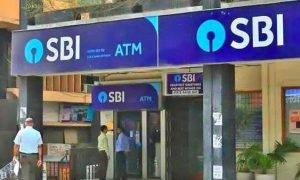The old pension scheme was a ‘defined benefit system’. It means that the pension was linked to the employee’s last drawn pay.
The debate around the difference between Old Pension Scheme (OPS) and the National Pension System (NPS) (earlier known as the New Pension Scheme) is not new and it has made headlines from time to time.
The ongoing debate between OPS and NPS brings to the table a primary concern of how Indians are planning their retirement. Amid the uncertainties post the Covid-19 pandemic, a concern for health has seen an increasing trend, as well as the concern of a safe retirement to secure old-age during turbulence. In these circumstances, saving money and a good pension have become crucial for common people. Therefore the pension system has taken a centrestage in financial planning.
Read More: Corporate Fixed Deposit Has Higher Risk Factor Than Banks; Know Interests Offered
Before we delve into what was OPS, it is pertinent to know the current pension framework in India. NPS is a pension cum investment scheme launched by Government of India to provide old age security to citizens of India. It was launched in January 2004 for government employees. Later it was opened to other sectors in 2009.
It brings a long term saving avenue to effectively plan the retirement through safe and regulated market-based return. The scheme is regulated by Pension Fund Regulatory and Development Authority (PFRDA). National Pension System Trust (NPST) established by PFRDA is the registered owner of all assets under NPS.
Under NPS, the pension payout post-retirement depends on the returns generated by the corpus accumulated during the working years of the employee. Any individual who is a subscriber of NPS can claim tax benefit under Sec 80 CCD (1) within the overall ceiling of Rs. 1.5 lac under Sec 80CCC.
In contrast, the old pension scheme was a ‘defined benefit system’. It means that the pension was linked to the employee’s last drawn pay. This is the primary reason many government employees demand to revert to the old system of guaranteed pension.
OPS and NPS: Key differences
- A retired employee receives 50% of their last drawn salary as monthly pensions in the OPS. On the other hand, NPS is a contributory pension scheme where the employee and the employer contribute their respective shares.
- The OPS is a defined pension scheme of Govt. of India, whereas NPS is a contributory pension scheme.
- Only government employees were eligible for receiving a pension after retirement in OPS. NPS covers the private sector as well.
- The expenditure incurred on the OPS is borne by the government. NPS is based on market based returns over the long term.
Meanwhile, PFRDA is reportedly planning to introduce a new product, minimum assured return plan (MARS). It aims to attract investors who look for low risk and aim for a guaranteed payout post-retirement. It is expected to give 4-5 per cent guaranteed income on the pension corpus for 10 years. More details are expected to come in the coming months.





































